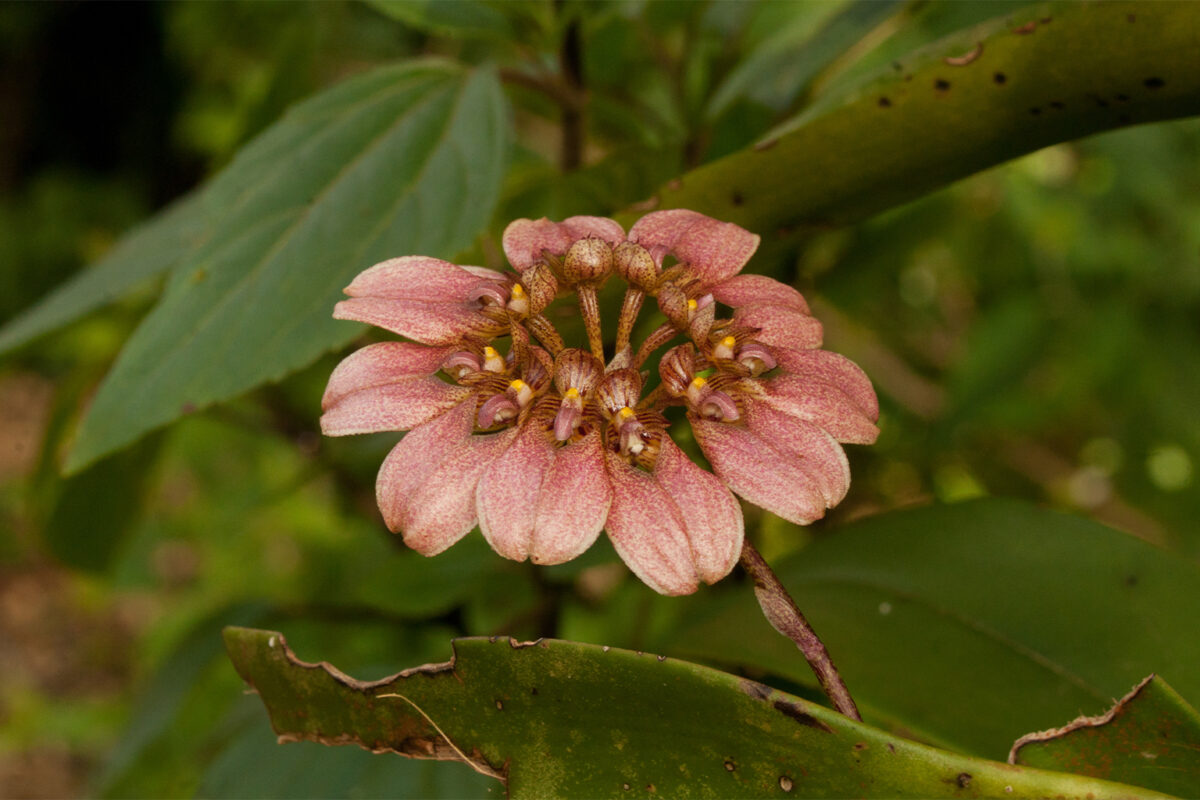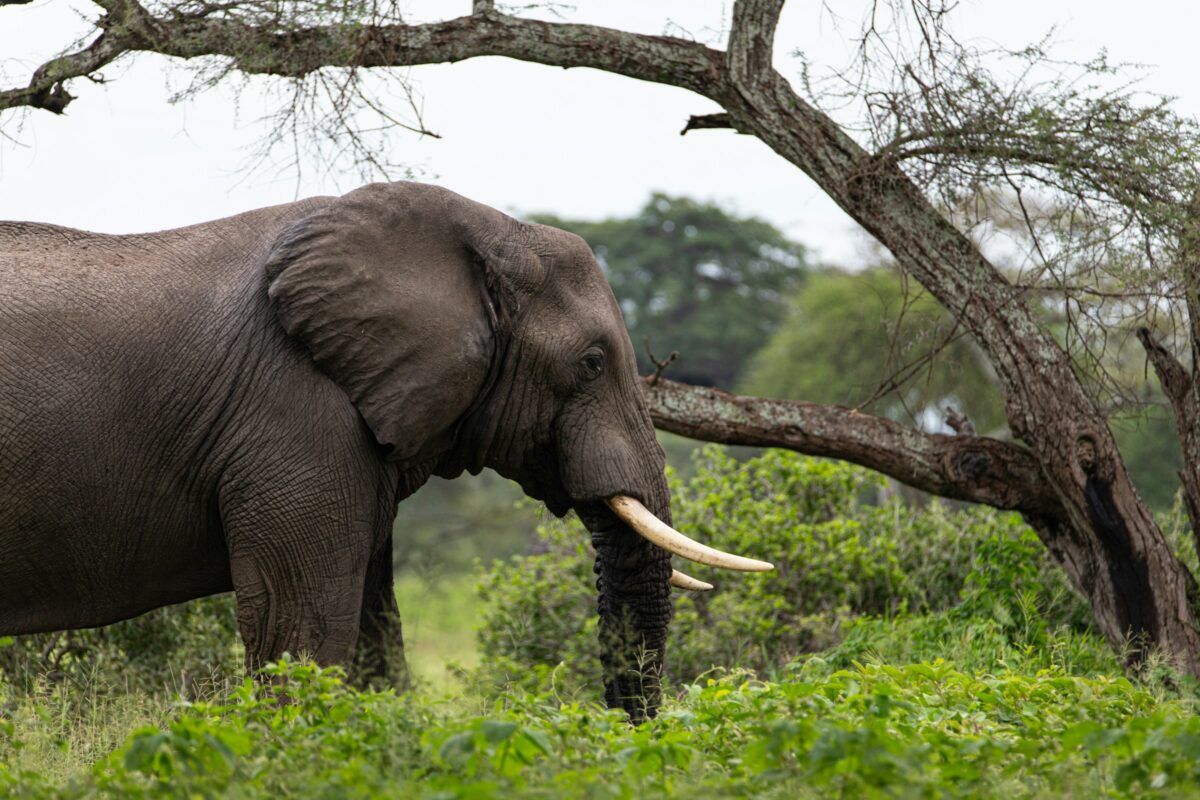- Bangladesh is attempting to conserve and nurture five critically endangered flora species to ensure their healthy population in nature. Currently, these plants are present only in some specific places in the country.
- The species are the bulborox, small-bulb orchid, dwarf date palm, chaulmoogra and bashpata, which are identified as critically endangered in the latest Plant Red List of Bangladesh.
- The Bangladesh Forest Department has taken the initiative to increase the plants’ numbers by cultivating them in the National Botanical Garden and the National Herbarium before planting them in suitable habitats.
For the first time in its history, Bangladesh is attempting to protect five species from extinction by increasing their numbers and strengthening their population in the wild.
The floral species are bulborox (Bulbophyllum roxburghii), the small-bulb orchid Bulbophyllum oblongum, dwarf date palm (Phoenix acaulis), chaulmoogra (Hydnocarpus kurzii) and bash pata (Podocarpus neriifolius).
All of them are identified as critically endangered in the country’s first-ever Plant Red List of Bangladesh published in November 2024.
In the Red List, 1,000 species were assessed from five plant groups. Of these, 271 species were categorized as least concern, 256 species as data deficient, while 395 species were collectively termed threatened, including five critically endangered species, 128 endangered and 262 vulnerable.
A total of 70 species were assessed as near threatened and seven species were assessed as regionally extinct. One species was found to be extinct in the wild.
According to the Red List, bulborox and the small-bulb orchids currently exist in only a particular area of the Sundarbans, while the dwarf date palm is currently present in only the sal (Shorea robusta) forest in the northern district of Dinajpur.
A minimal number of chaulmoogra trees are currently located in the forests of Bandarban, Rangamati, Cox’s Bazar, Chittagong, Moulvibazar and Habiganj districts.
Though the bash pata plant can currently be found in different locations of Cox’s Bazar, Rangamati, Bandarban, Khagrachhari, Moulvibazar and Habiganj districts, as well as in the National Botanical Garden, there are only 111 of them in the country.
According to a note, the government is attempting to increase the number of both orchids using the tissue culture method and later plant those in suitable ecosystems, such as coastal areas and hill forests in Bangladesh.
The dwarf date palm is a small plant that can easily be nurtured in a flowering tub. As the plant germinates from its seed, researchers are working on growing more seedlings to plant in the country’s sal forests in multiple districts.
The Red List states that the chaulmoogra tree has a limited capacity to grow from natural seeds. However, it can be cultivated using the tissue culture method. Efforts are underway to develop seedlings and plant them in their natural habitat.
The bash pata plant never produces fruits; rather, the seed is open. The plant is used to manufacture pencils, and the seed production is very low. Therefore, the forest department is working on increasing its population through the tissue culture method.
“Our team is working to protect the species from extinction. Besides the conservation of the five critically endangered species, we are trying to collect two extinct plants — gola anjan [Memecylon ovatum smith] and fita champa [Magnolia griffithii] — from our neighboring countries as we share nearly similar ecosystems,” said Syeda Rizwana Hasan, adviser to the Ministry of Environment, Forest and Climate Change.
Regarding the importance of protecting biodiversity, a 2020 study says plants play a crucial role in maintaining the composition and quality of the atmosphere and soils in terrestrial ecosystems. They also provide support to other small organisms that are directly or indirectly linked to the food chain. Besides these, the production of medicines, building materials, biofuels, different types of chemicals and so on come from plants. The extinction of certain types of plants may break such a chain.
The conservation process
The Bangladesh Forest Department has been collaborating with the Bangladesh National Herbarium, National Botanical Garden and IUCN Bangladesh on this work.
“For the orchids, using their bulbs to multiply them would be the easiest method; however, the tissue culture method is the best for this process even though it’s time-consuming,” said Gazi Mosharof Hossain, an assessor of the Red List and a botany professor in Jahangirnagar University.
Regarding the dwarf date palm, he told Mongabay, “As the species grows from its seed, it could easily be multiplied.”
“As per our assessment, about 40% of the species are found as ‘threatened in condition.’ The current initiative of multiplying the species and increasing their numbers in nature will play a major role in conserving them,” said A.B.M. Sarowar Alam, Red List project coordinator .
According to government data, Bangladesh is home to 3,813 plant species. “Out of those species, we have only assessed the status of 1,000 species, and if we can finish the rest of the species, we will be able to do the Red List indexing properly, which will help to protect all the species from risk of extinction,” Alam said.
The country has already declared 56 protected areas, including national parks and sanctuaries, which are playing an important role in forest and wildlife conservation.
The Red List also identified 17 invasive plant species that are harmful to the country’s ecology. These species can out-compete native species, disrupt ecosystem processes and interrupt food webs. Of them, the significant ones are Assamgach (Chromolaena odorata), Assamlota (Mikania scandens), lajjabati (Mimosa pudica), sungrass — or chon — (Imperata cylindrica), kansh (Saccharum spontaneum), kachoripana (Eichhornia crassipes) and lantana — mogkanta — (Lantana camara).
Banner image: Bulborox orchid (Bulbophyllum roxburghii), critically endangered in Bangladesh. Image by Plant.Hunter via Flickr (CC BY-NC-SA 2.0).
Bangladesh’s new red list of plants shows country has already lost seven species
Citation:
Raven, P., & Wackernagel, M. (2020). Maintaining biodiversity will define our long-term success. Plant Diversity, 42(4), 211-220. doi:10.1016/j.pld.2020.06.002









